The Lao People’s Democratic Republic, commonly known as Laos, is a landlocked country in Southeast Asia. Bordered by Myanmar (Burma) and China to the northwest, Vietnam to the east, Cambodia to the south, and Thailand to the west.
Here are some facts about Laos that will help you get to know this fascinating country better and learn what Laos is famous for?
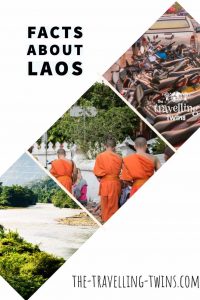
Fast facts about Laos
Laos is the only landlocked country in Southeast Asia.
The official name of the country is Lao People’s Democratic Republic.
The capital city of Laos is Vientiane.
Laos is considered to be part of the Indochina region.
The official language of Laos is Lao. However, many people also speak French, English, and other languages.
Theravada Buddhism is the largest religion in Laos.
Laos gained independence from France in 1953.
The currency of Laos is the kip.
Lao People
The Lao people are the ethnic group that inhabits the Country of Laos. They are descended from the Tai peoples who migrated to Southeast Asia from southern China over 2,000 years ago.
With a population of over 7 million people, it is one of the least populous countries in Asia. The official language of Laos is Lao, which is closely related to Thai and Vietnamese.
The Lao language is a member of the Tai-Kadai language family, and the Lao alphabet is derived from the Pallava script, which was used in southern India during the 5th and 6th centuries AD.
Although Laos is a relatively poor country, the Lao people are known for their friendly nature and their love of music and dance. Many Lao refugees have settled in Western countries such as the United States, Australia, and France.
Laos Flag
The flag of Laos was adopted on December 2, 1975. The flag has horizontal stripes of red, blue, and red. In the middle of the blue one, there is the white disk.
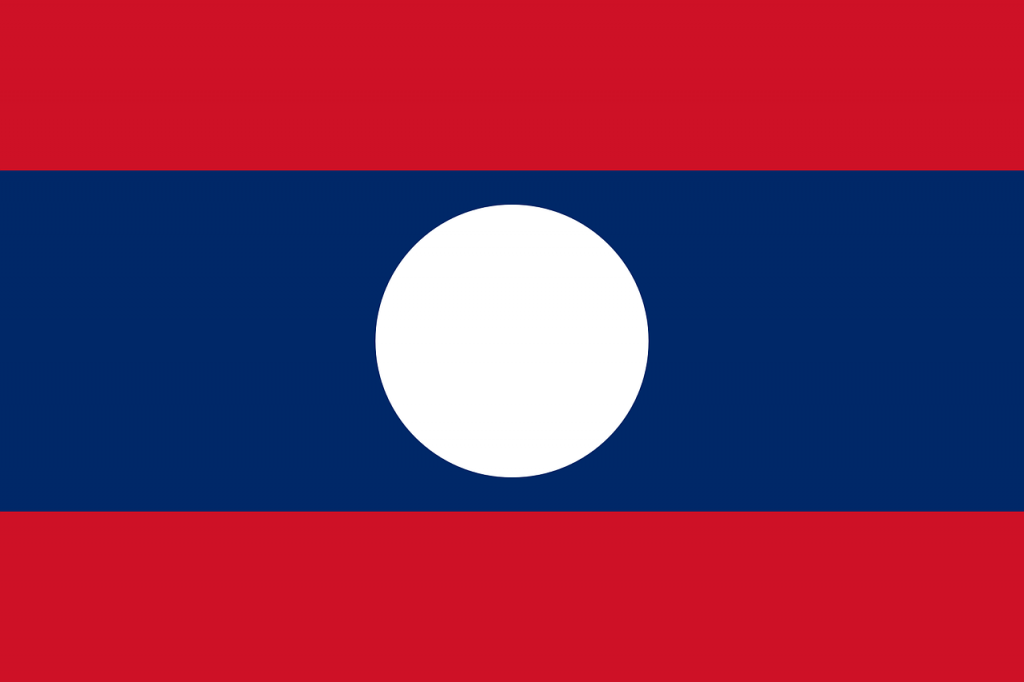
The Land of a Million Elephants
In XIV century Laos (area of Luang Prabang) name was Lan Xang – The Land of a Million Elephants” (it’s Laos nickname) in reference to its large population of elephants. These animals play an important role in Laotian culture and history, and they are revered by many as symbols of strength and power.
Unfortunately, elephants are also vulnerable to threats like habitat loss and poaching. In recent years, these threats have caused the population of elephants in Laos to decline. As a result, conservation efforts are needed to protect these animals and ensure that they can continue to thrive in Laos.
A short history of Laos
It has a long history dating back to the Bronze Age when the region was inhabited by Austroasiatic peoples. The first Kingdom of Laos was established in the 14th century when it split off from the Khmer Empire.
For centuries, Laos was under the rule of Siam (now Thailand) until it became a French colony in 1893. Following World War II, it regained its independence from France but soon fell under communist rule during the Indochina War.
In 1975, the Communist Pathet Lao took control of the government and renamed the Country the Lao People’s Democratic Republic. Since then, Laos has undergone a gradual process of reform but remains one of the poorest and least developed countries in Southeast Asia.
Vietnam war in Laos
The Vietnam War had a profound impact on Laos. During the war, the United States dropped more bombs on Laos than on any other country in history. As a result, large areas of the country were left devastated.
In addition, many Laotians were forced to flee their homes and become refugees. Even after the war ended, the effects of the conflict continued to be felt. For example, unexploded bombs still littered the countryside, making it dangerous for people to farm their land or travel freely. In addition, many Laotians remained displaced, living in refugee camps or in other countries.
Monks in Laos
Theravada Buddhism is the primary religion practiced in Laos, with approximately 60% of the population adhering to this faith. Monks are an integral part of Laotian society. Monks live in temples and devote their lives to prayer and study. They usually wear orange or saffron robes and shave their heads as a sign of renunciation.
Every morning, the monks go out into the community to collect food from local residents. This tradition, known as almsgiving, is seen as an important way to generate merit.
Young Lao Boys aged between 7 and 20 are expected to be monks for at least three months.
In addition to prayer and study, monks also play an important role in teaching the Dharma, or Buddhist teachings, to laypeople. As such, they play a vital role in helping to keep the Buddha’s teachings alive in Laos.
Laos cuisine
Laos food is strongly influenced by its neighbors, with Thai, Vietnamese, and Chinese dishes all making an appearance.
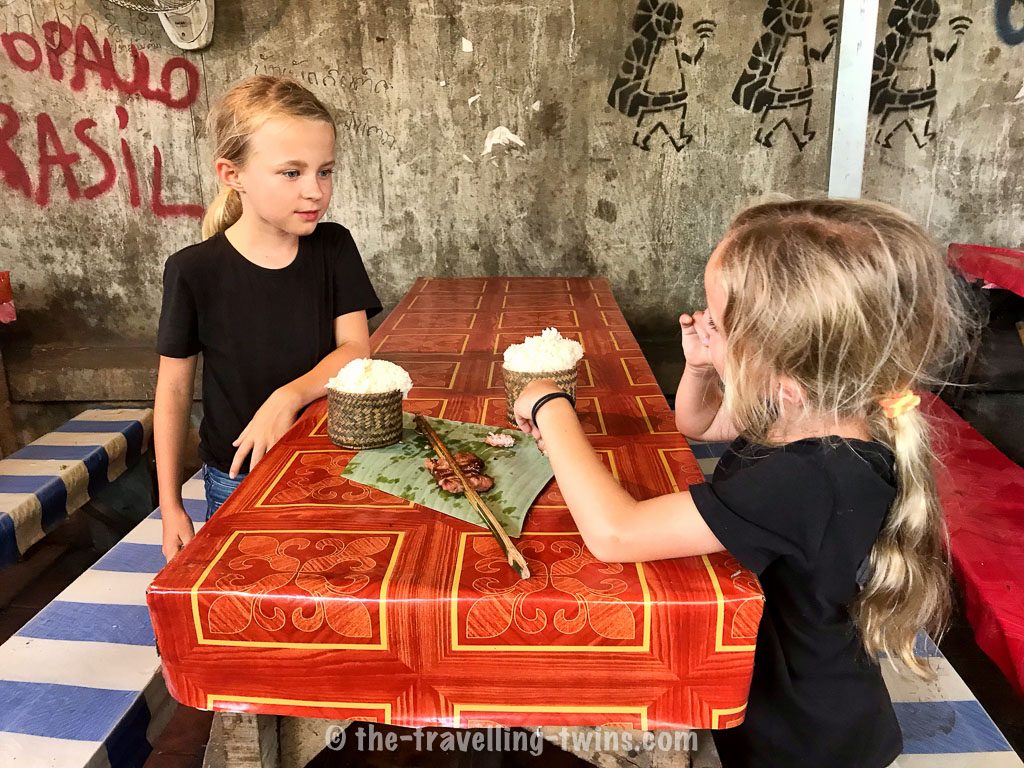
The national dish is larb, a spicy salad made with meat (usually chicken, beef, or fish), chilies, lime juice, and herbs. Other popular dishes include kaizen (thin rice paper wrapped around vegetables), tam mak hung (a sweet and sour soup), and sticky rice.
Lao people are the biggest consumers of rice in the world, and sticky rice is a staple of the Lao diet. Sticky rice is often served as dessert, topped with fruit or coconut cream.
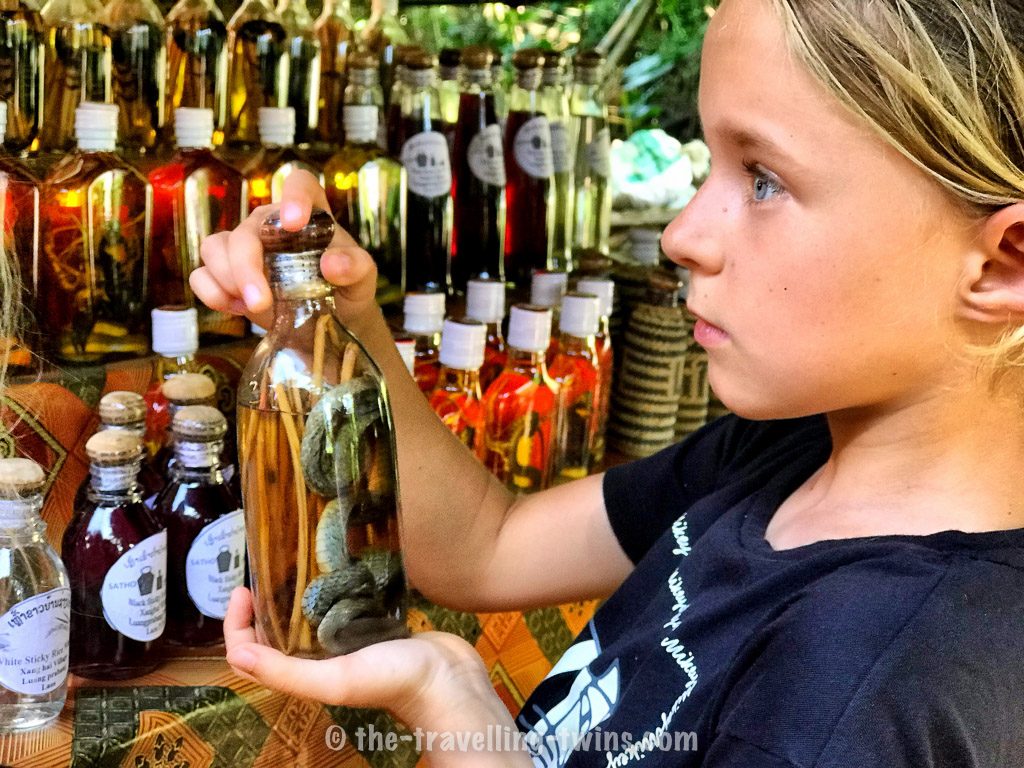
Zoe holding a snake whiskey in whisky village Luang Prabang
In Laos, you can eat fired tarantula, one of the weirdest food in the world.
Human fossil
In 2019, a team of international researchers announced the discovery of a fossilized human skull in Laos. The skull, which is believed to be around 46,000 years old, is the oldest human fossil found in Southeast Asia.
The discovery sheds light on the migration of early humans out of Africa, and provides new insights into the diversity of early Homo sapiens. The skull was found in a limestone cave near the town of Hang Tuah.
What to see in Laos
Laos is a Southeast Asian country that is often overshadowed by its more popular neighbors, Thailand and Vietnam. However, Laos has its own unique charms, and visitors will find plenty to see and do.
For example, Luang Prabang is a UNESCO World Heritage Site that features beautiful temples and colonial-era architecture. Vang Vieng is another popular destination known for its scenic mountains and riverside setting.
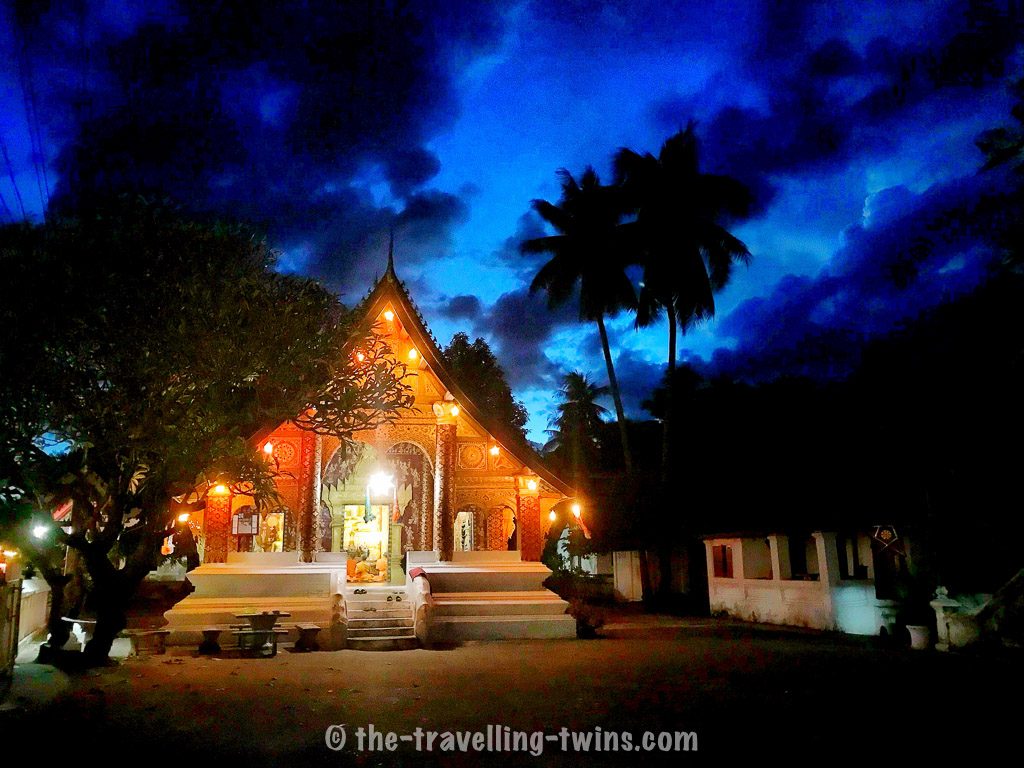
There’s plenty to do in Laos’ natural surroundings for those seeking a more active vacation. Hiking and biking trails wind through jungle-covered mountains, while adrenaline junkies can go whitewater rafting on the rapids of the Nam Ou River. And don’t forget to dip in one of Laos’ many stunning waterfalls. Our favourite waterfall was Kuang Si Falls
And finally, no trip to Laos would be complete without a visit to the famous Mekong River, which runs through the country and offers stunning views. Whatever your interests, you’ll find something to love in Laos.
Mekong River
The Mighty Mekong River is one of the most important rivers in Southeast Asia. It runs through six countries – Laos, Cambodia, Thailand, Vietnam, Myanmar, and China – and provides vital water resources for millions of people.

The river is also home to a huge diversity of wildlife, including rare and endangered species. In Laos, the Mekong River forms a major part of the country’s landscape. It flows through some of the most remote and beautiful parts of the country and is a vitally important source of water for locals. Fishermen pluck a wide variety of fish from its waters, while farmers use it to irrigate their crops.
The Mekong is also an important transport route, linking different parts of Laos by boat. Tourists can explore the river on traditional longboats or take part in rafting or kayaking trips.
Laos has many islands
Despite being landlocked, Laos is home to over 4,000 islands, many of which are uninhabited. The most popular islands are located in the Mekong River, which runs through the country. These include Don Daeng Island, an important bird sanctuary; Don Khon, known for its waterfalls and limestone cliffs; and Si Phan Don, or “Four Thousand Islands,” a paradise for swimming, fishing, and relaxing. Whether you’re looking for adventure or simply a place to escape the hustle and bustle of daily life, Laos has an island that’s perfect for you.
Laos National Flower
The Dok Champa flower is a species of magnolia that is native to Laos. The flowers are large and fragrant, and they grow in clusters of up to 12 blossoms. The petals are white with a purple or pink tinge, and the center of the flower is yellow.
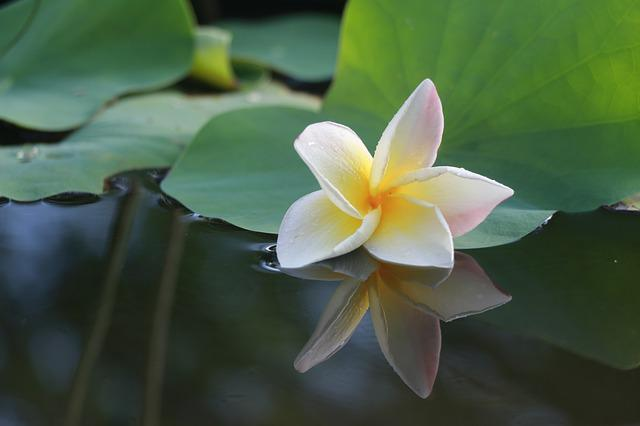
The Dok Champa flower is the national flower of Laos, and it is often used in religious ceremonies and festivals. The flowers are often growing next to temples and are considered sacred.
The Dok Champa flower is also the symbol of love and friendship, and it is given as a gift to express these sentiments. If you want to learn about other national flowers check out our post.
Economy in Laos
Agriculture is the mainstay of the economy, with rice being the primary crop grown. Surprisingly Coffee is the biggest export product, and to tell the truth it’s one of the best coffee in Asia. Tourism is also an important source of income for Laos, with attractions such as Luang Prabang and Vang Vieng drawing visitors from around the world.
Laos Interesting Facts – Pin it
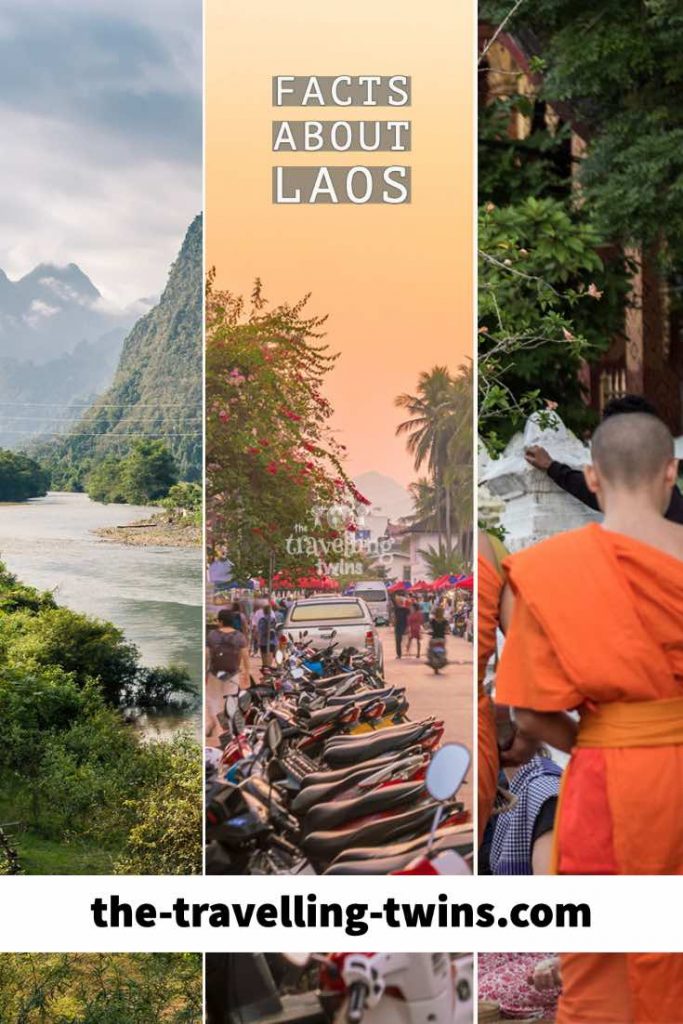
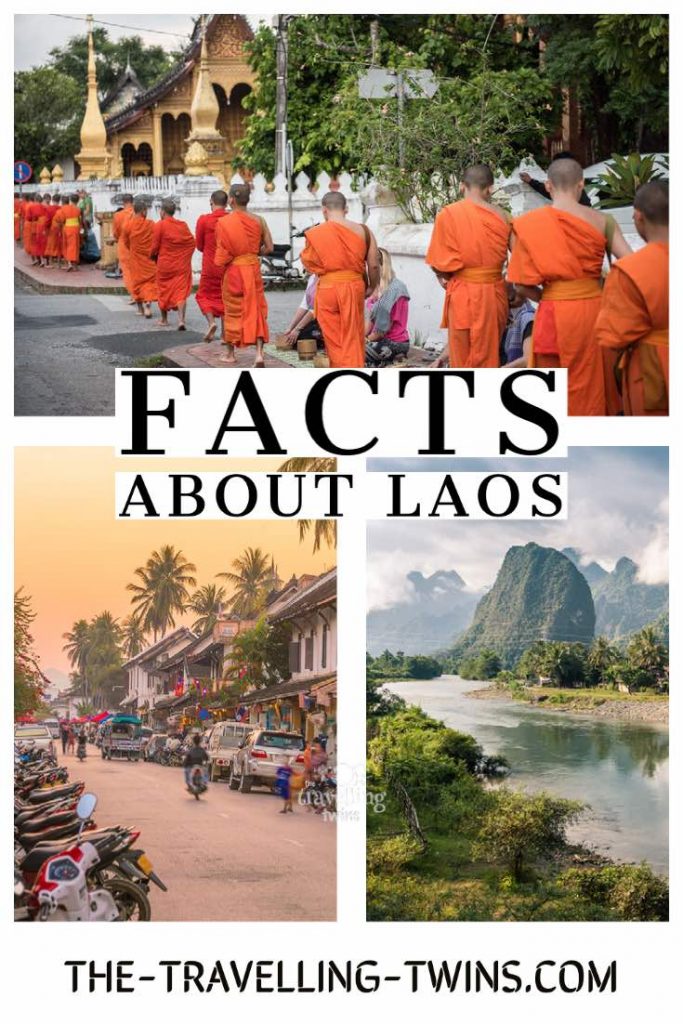
Privacy Policy Disclaimer
This website uses affiliate links for income and support.
If you like our website, please consider using these links. You will be directed to the vendor, and we will get a small commission on your purchase price at no increased cost to you.
We have researched facts stated here as far as practicable but please check anything critical before committing your time and money. We do not claim any special knowledge or expertise, and we are not consultants for our readers.
Privacy Policy Disclaimer
This website uses affiliate links for income and support.
If you like our website, please consider using these links. You will be directed to the vendor, and we will get a small commission on your purchase price at no increased cost to you.
We have researched facts stated here as far as practicable but please check anything critical before committing your time and money. We do not claim any special knowledge or expertise, and we are not consultants for our readers.